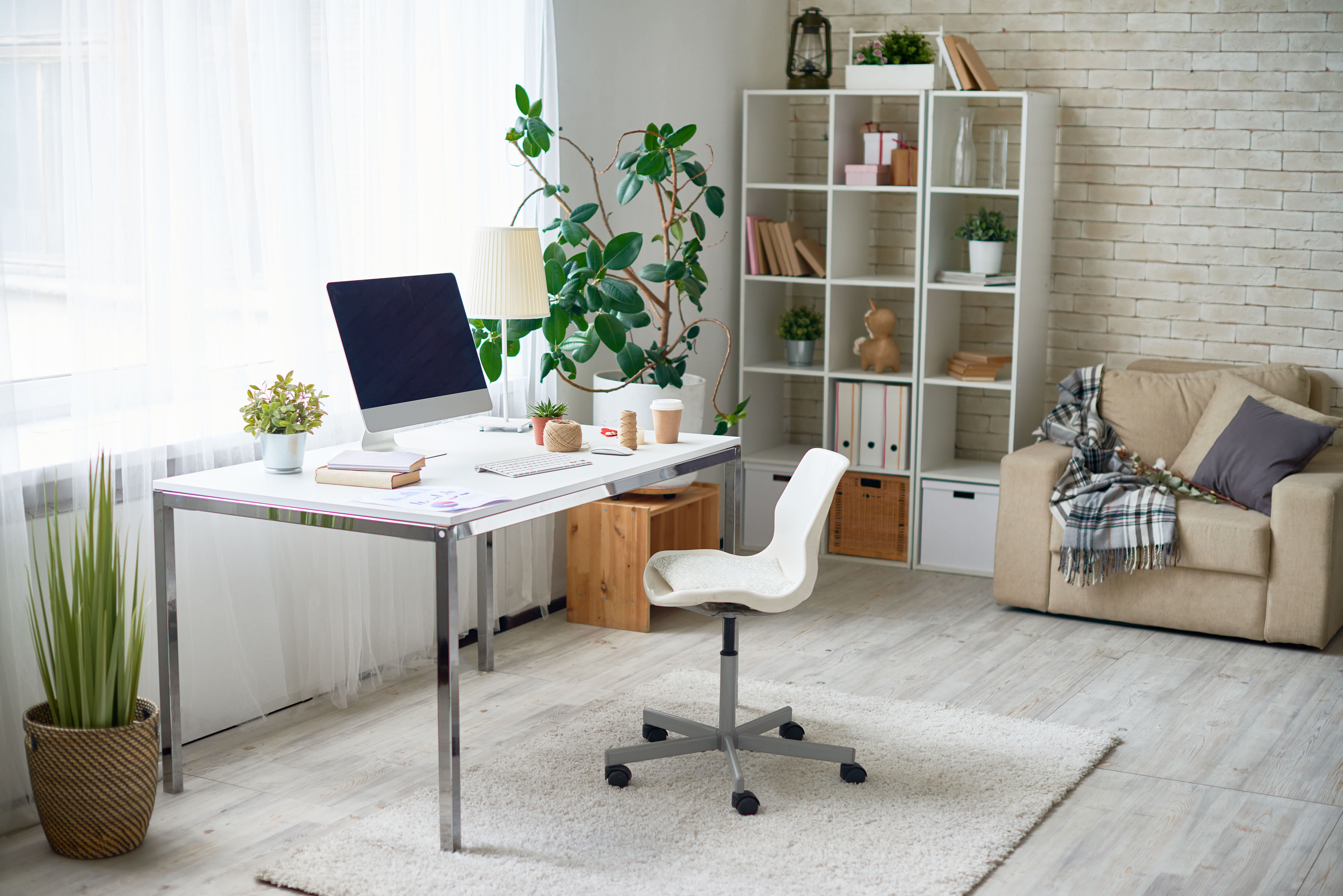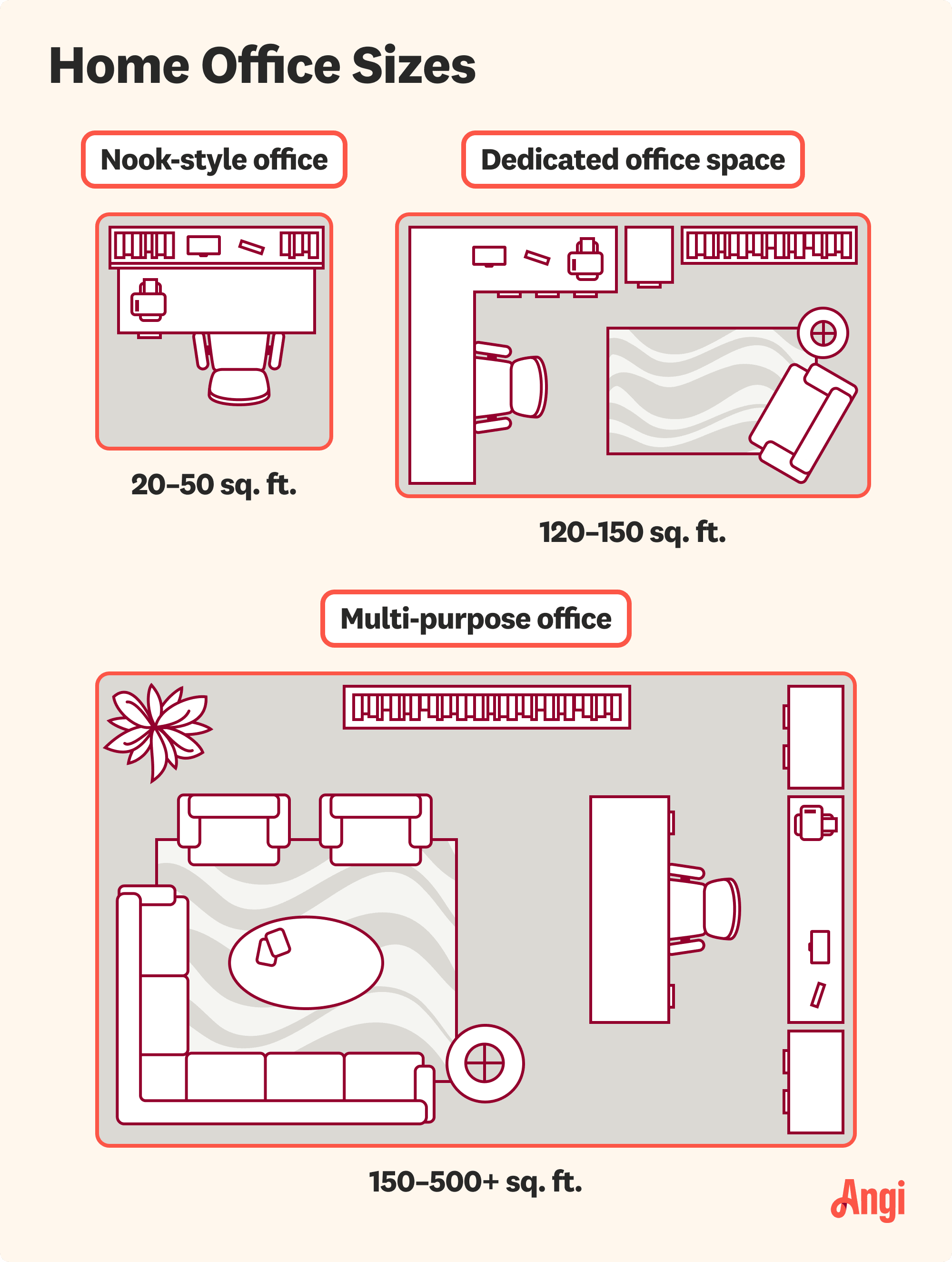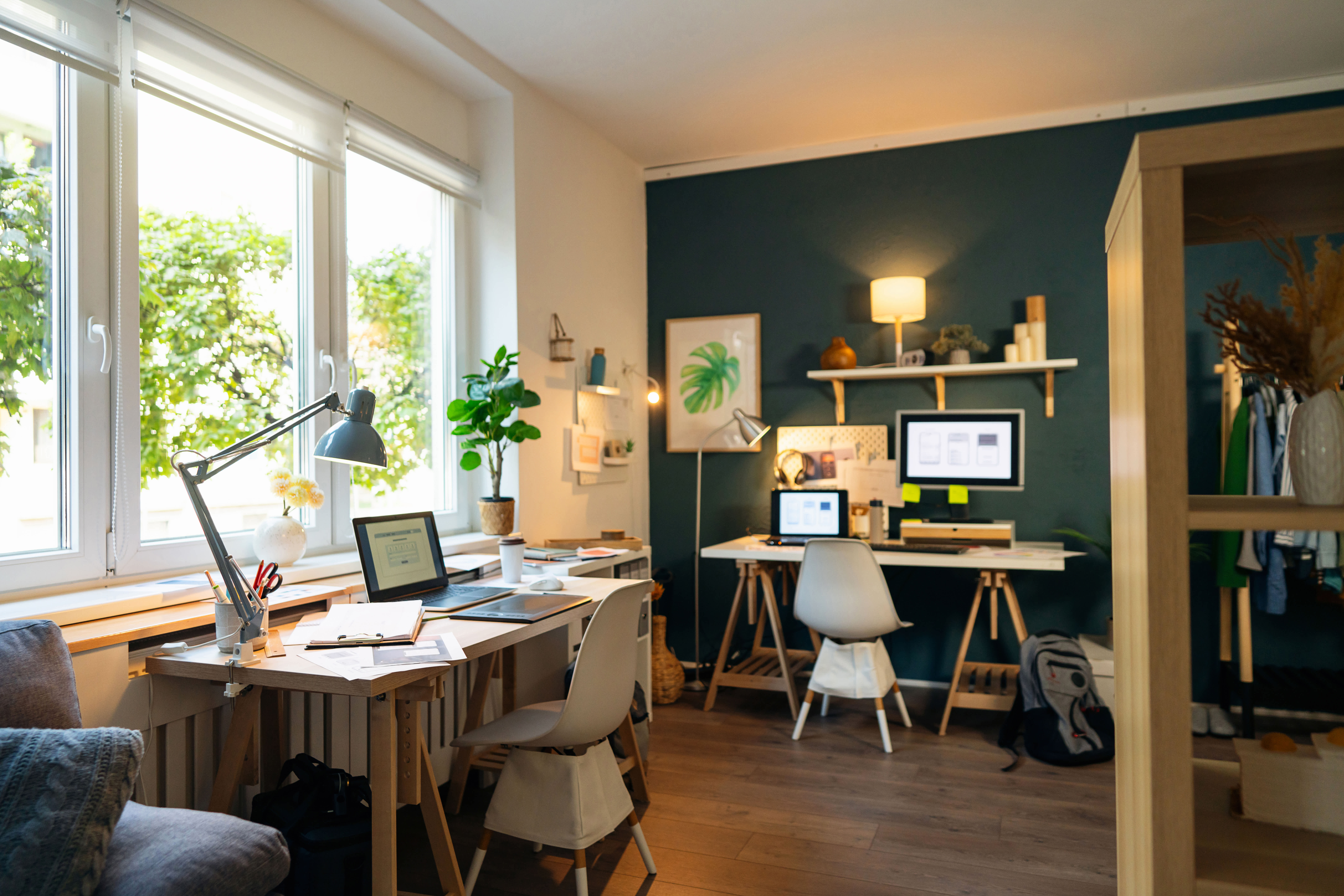
Remodeling your bathroom can add significant value to your home. Your bathroom remodel cost in New York, NY will depend on size, fixtures, materials, labor, and other factors.
From expansive workspaces to standing (desk) room only


Most home offices are between 120 and 150 square feet and are often converted spare bedrooms.
The type of office space you need, your budget, and the spare living space you have will all factor into your home office size.
Consider privacy for your office space, especially if you’re using the room to make calls or record audio.
If you don’t have space to spare in your home, you can build a bump-out or an outbuilding to house your new office space, although the cost will be high.
The right size home office can set you up for success, whether you’re using the space to conduct meetings, record audio, edit video, or just get some after-hours work done for your job. Whether you’re planning on converting existing space to a home office or want to build a home addition to accommodate your needs, understanding average home office sizes is a good place to start to avoid under-sizing or over-committing.
The standard home office size is between 120 and 150 square feet, as most homeowners convert an existing bedroom to office space, and these are the standard bedroom dimensions.
However, home office sizes vary widely, from just 20 square feet if you’re partitioning off a portion of a room to 500 square feet or more if you need special equipment or larger workspaces for creative needs.

There are three main types of home offices, and the one you choose will largely determine the size of your space. Most homeowners convert a spare bedroom to create a dedicated workspace, but you may need less room or more room, depending on your needs. A nook-style office in an existing room will take up the least square footage but come with the most restrictions, while a multi-purpose office can be as large as you need it.
| Type of Office | Size (sq. ft.) | Ideal For |
|---|---|---|
| Nook-style | 20–50 | Smaller homes |
| Dedicated room | 120–150 | Most homeowners |
| Multi-purpose | 150–500+ | Creatives |
A nook-style office is a space that you carve out of an existing room to serve as a dedicated workspace. Nook-style offices are usually between 20 and 50 square feet, depending on the size of the room you’re “borrowing” space from and how much room you need for your office equipment.
This type of home office can accommodate a small desk and a chair, and you may be able to add a small filing cabinet or dresser for storage and space for equipment like a printer. If you’re converting a closet to workspace, you’ll usually only have room for a small desk and chair.
Nook-style offices are the most affordable to set up, and they’re the easiest to DIY, although the small size does impose the most restrictions on what you can add.
A dedicated office space is a full room that you convert to a home office. Since most homeowners convert a spare bedroom to a home office, most will be between 120 and 150 square feet, with the following dimensions being the most common:
10 feet by 12 feet
10 feet by 15 feet
12 feet by 12 feet
In an office this large, you can have a medium or large desk with a chair, a dedicated piece of furniture for storage needs, and a separate seating area for reading or lounging during breaks. You have much more flexibility when it comes to layout and what you can include.
A multi-purpose office might be right for you if you need a particularly large space for specialty work, like painting, recording music, or drafting blueprints, or for homeowners who will have multiple family members working from home. Multi-purpose office spaces are usually a minimum of 150 square feet, but they can be 500 feet or larger, depending on your needs.
With a multi-purpose office, you can either have a desk, chair, and storage for multiple at-home workers, or you can have a dedicated desk and chair for formal business with additional space for a work table, easels, audio equipment, or anything else you might need for your specific purposes.
Multi-purpose offices often require more space than a standard spare bedroom will provide, so they’re more common in finished attics, finished basements, or outbuildings, making them the hardest to DIY and the most expensive. Most homeowners hire a general contractor to build out multi-purpose office spaces.
Getting the right size for your home office is crucial. Too small, and you may quickly need to spend more to expand your office space or be left feeling overly cramped while you work. Too large, and you’ll not only overspend on designing and filling your office with furniture, but you’ll also lose the living area the space could have otherwise provided.
Start by thinking about what you need in your office. If you conduct all of your business from a computer and don’t need anything but a desk and a chair, you can get away with dedicating between 20 and 50 square feet to an office nook. If you want some more space or need additional equipment, like printers and storage furniture, go a bit bigger and aim for 120 to 150 square feet. If you know you need special equipment, like drafting tables or large artistic workspaces, go even larger.
You can measure the furniture and components you need and sketch out a to-scale drawing to get a feel for how the room will look and function. Think about leaving space to walk, and consider the placement of doors and windows carefully while you fit what you need into your office space.

There are many factors that can and should influence your home office size, so be sure to consider all of the following when designing your workspace.
The type of office you want or need is the most significant factor to think about. When it comes to workspace and creative spaces, having enough room will mean you get the most utility possible. Be realistic about how you plan on using your office, and then decide if a nook-style, dedicated space, or multi-purpose office is right for your needs.
Unless you’re constructing a new outbuilding or room addition to house your new office, you’ll have to consider how much space you have to spare for your office. Most homeowners convert a spare bedroom to an office, but if you don’t have a full room to spare, think about how much space you can afford to take away from an existing bedroom or family room for your work area.
While you’re considering space constraints, think carefully about privacy, too. If you need to limit distractions or maintain privacy for confidential work like telehealth sessions, make sure the room you’re considering partially converting can accommodate those needs.
Will it just be you working in your home office, or do you have multiple family members or coworkers who will be using the space to work? Try to dedicate a minimum of 50 square feet per person who will be sharing the office space. If each of you needs additional room for storage or other equipment, aim for at least 75 to 100 square feet per person.
Finally, think about your budget. Converting an existing room to office space is usually DIYable and won’t cost much more than the furniture and equipment you add, but even then, home office building costs can quickly get out of hand if you splurge on additional couches, seating, or storage equipment to fill the space.
Your budget is especially important if you’re building a home addition or an accessory dwelling unit (ADU) for a larger office space. Building a home addition costs an average of $51,000, and every square foot you add will drive up your price. Think about what you need the space for and then decide what your budget can accommodate.
If you have an office space that feels too large or looks awkwardly empty with the equipment and furniture you need, you have a few options to remodel or renovate. You can convert the room back to a bedroom or whatever it was previously, and then convert a smaller room to an office space. Another good option is to create a multi-purpose room by putting your workspace in a corner and using the remaining area as something else, like a kid’s playroom or a dedicated seating area. You may want to hire an interior designer for help with this project.
More often, homeowners will find that their home office is too small, and fixing this issue is more involved. You can relocate your office to a larger room in your home if you have space to spare, or you can knock down non-load-bearing walls to open up the area and combine two or more rooms into a larger office.
If you need more space than your home has to spare, you may need to consider hiring a home remodeling company near you to build an addition or an ADU. This is the most expensive option by far, but it gives you ultimate freedom in your design.
From average costs to expert advice, get all the answers you need to get your job done.

Remodeling your bathroom can add significant value to your home. Your bathroom remodel cost in New York, NY will depend on size, fixtures, materials, labor, and other factors.

Shower installation costs in New York, NY depend on size, style, and materials. No matter the budget, this guide can help you plan your project and even save a few bucks.

A laundry remodel can add beauty and organization to your home. Learn the factors contributing to your laundry room remodel costs.
.jpg?impolicy=leadImage)
Walk-in showers offer plenty of benefits when compared to standard bathtubs, but are they right for you? Discover the pros and cons of walk-in showers.

Quartz sinks can be an affordable and simple-to-maintain alternative to stone sinks. Learn about quartz sinks pros and cons in this guide.

Luxury home renovation costs more than typical remodeling due to the increased expense of high-end materials, which can increase the value of your home.